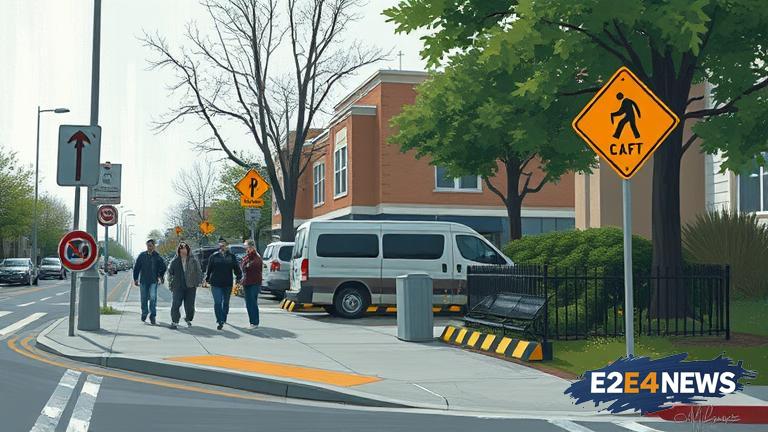The concept of the curb cut effect has been gaining attention in recent years, as it highlights the importance of accessibility in creating a more inclusive and equitable society. The term originated from the installation of curb cuts on sidewalks, which were initially designed to facilitate easy access for people with disabilities. However, it soon became apparent that these features were also beneficial for parents with strollers, travelers with luggage, and even cyclists. This phenomenon demonstrates how accessibility features can have a positive impact on the broader community, beyond their intended purpose. The curb cut effect is not limited to physical infrastructure, but can also be observed in digital technologies, such as closed captions and audio descriptions, which can be useful for people with hearing or visual impairments, as well as for those who prefer to consume content in a different format. Moreover, accessibility features can also promote social and economic inclusion, by enabling people with disabilities to participate fully in society. For instance, accessible public transportation can facilitate employment and education opportunities, while accessible buildings can provide equal access to goods and services. Furthermore, the curb cut effect can also be seen in the development of new technologies, such as voice assistants and smart home devices, which can be controlled using voice commands or gestures, making them more accessible to people with disabilities. Additionally, the curb cut effect can also have economic benefits, as it can increase customer base and revenue for businesses that incorporate accessibility features into their products and services. In fact, a study by the Disability Market Research Report found that the global disability market is estimated to be worth over $13 trillion, highlighting the significant economic potential of accessibility. The curb cut effect also underscores the importance of universal design, which involves creating products and environments that are accessible and usable by everyone, regardless of age or ability. Universal design can help to break down social and physical barriers, promoting a more inclusive and equitable society. Moreover, the curb cut effect can also be seen in the development of accessible education, where digital technologies can provide equal access to learning materials and opportunities for students with disabilities. For example, online courses and degree programs can be designed to be accessible to students with disabilities, providing them with equal opportunities for education and employment. The curb cut effect also highlights the need for greater awareness and understanding of accessibility issues, as well as the importance of involving people with disabilities in the design and development of accessibility features. By doing so, we can create a more inclusive and equitable society, where everyone has equal access to opportunities and resources. In conclusion, the curb cut effect is a powerful phenomenon that demonstrates the importance of accessibility in creating a more inclusive and equitable society. By incorporating accessibility features into our physical and digital environments, we can promote social and economic inclusion, and create a more just and equitable world for everyone. The curb cut effect is a reminder that accessibility is not just a moral imperative, but also a sound business strategy, as it can increase customer base and revenue, while promoting a more inclusive and equitable society. As we move forward, it is essential that we prioritize accessibility and universal design, to create a world that is accessible and usable by everyone, regardless of age or ability. By doing so, we can unlock the full potential of the curb cut effect, and create a more inclusive and equitable society for all. The importance of accessibility cannot be overstated, as it has the potential to transform lives and promote social and economic inclusion. As such, it is essential that we continue to prioritize accessibility and universal design, to create a world that is accessible and usable by everyone. The curb cut effect is a powerful reminder of the importance of accessibility, and the need to create a more inclusive and equitable society. By working together, we can create a world that is accessible and usable by everyone, regardless of age or ability, and unlock the full potential of the curb cut effect.
